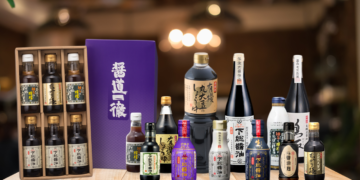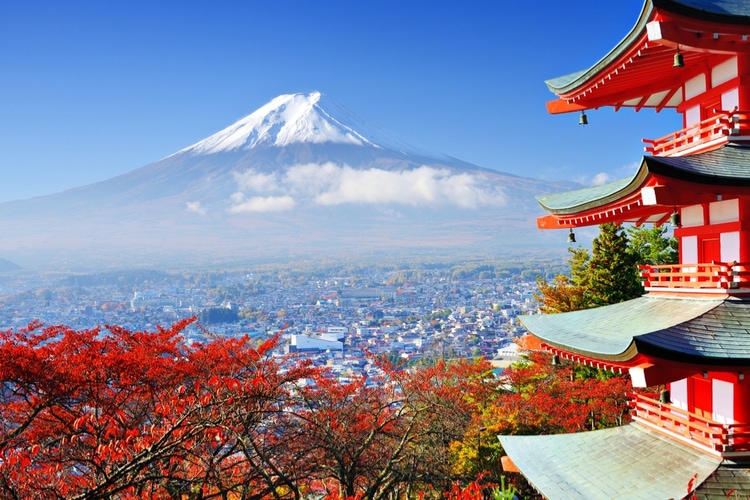Japan is one of the world’s most popular tourist destinations. It is a fascinating blend of traditional and modern, with numerous ancient temples and structures coexisting with modern architectural and technological achievements.
One day, visitors can immerse themselves in Japanese history and culture, and the next, they can see a glimpse of the future through technological advancements.
Japan is quickly becoming one of the most popular tourist destinations in the world. Every year, an increasing number of tourists are drawn to the island nation by the promise of fresh sushi, thrilling train trips, safe towns, fascinating traditions, and eccentric pop culture.
But Japan offers more than just cat and robot cafes; its numerous islands are surprisingly accessible and well-connected by railways, ferries, and bus services.
Let’s take a look at some of the Best Places to Visit in Japan that you cannot afford to miss:
1. Mount Fuji
Mount Fuji (Fuji-san), without a doubt Japan’s most iconic sight, is also the country’s tallest mountain peak. This spectacular and fabled mountain, which rises 3,776 metres above an otherwise fairly flat landscape to the south and east, can be seen from Tokyo, more than 100 kilometres distant.
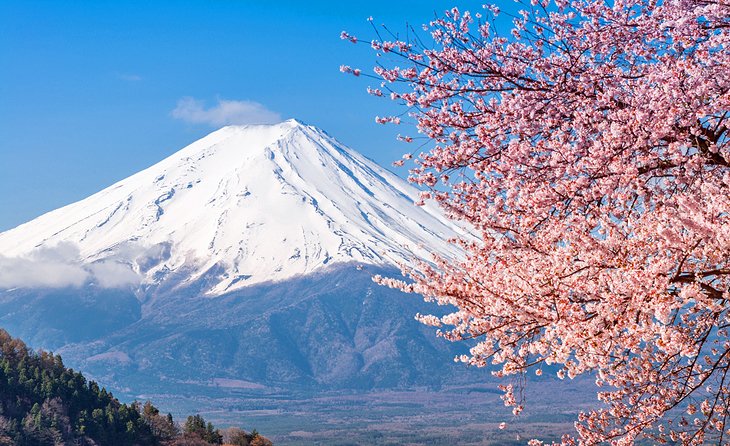
Mount Fuji has been praised in art and literature for ages, and it is now regarded as such an iconic figure that UNESCO acknowledged its global cultural value in 2013.
Mount Fuji, which is part of the Fuji-Hakone-Izu National Park, is ascended by over a million people each summer as a pilgrimage that culminates in a dawn view from its peak.
2. Golden Pavilion
Kinkaku-Ji, or the Temple of the Golden Pavilion, is one of Japan’s and Kyoto’s most prominent tourist attractions. The pavilion was built in the late 14th century as a retirement home for Shogun Ashikaga Yoshimitsu.

Unfortunately, a young monk who had become infatuated with the pavilion set it on fire in 1950. The temple was reconstructed five years later in an exact replica of the original.
The building and surrounding gardens are designed to be in harmony with one another. The pavilion is gold-leafed, highlighting the pavilion’s reflection in the pond as well as the water’s reflection on the building.
3. Imperial Tokyo
The Tokyo Imperial Palace is where Japan’s Emperor resides. It also serves as a museum and administration centre for Japanese art and history.
The palace is built on the foundations of ancient castles that were destroyed by fire or conflict, and architects have paid homage to the past by blending design aspects from several eras into the present structure.
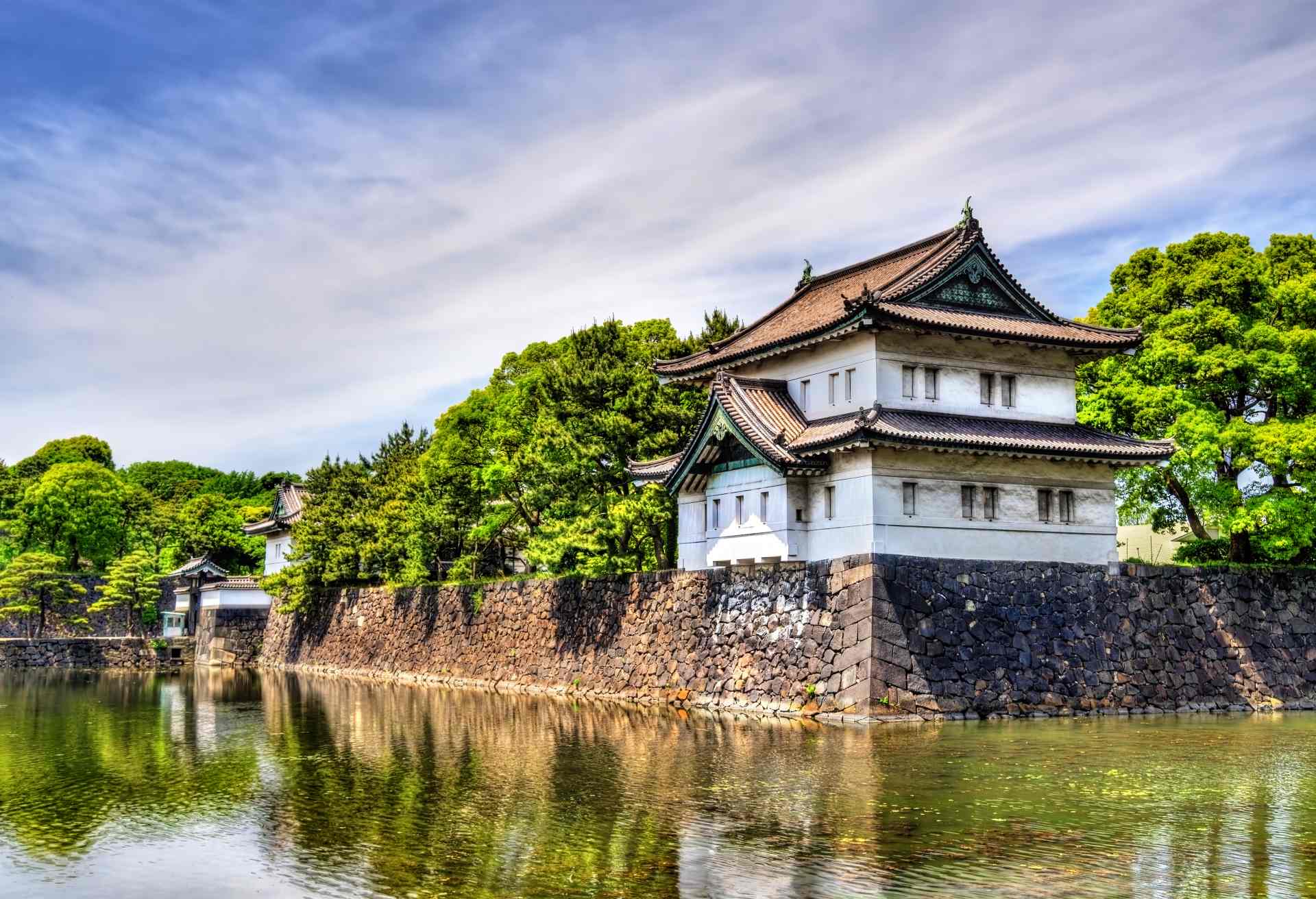
The new palace is surrounded by traditional Japanese gardens and features a number of reception and function rooms where visitors and the general public can be welcomed.
Don’t let the fact that most of the palace is closed to the public (it’s still in use by the Imperial family) deter you; there’s plenty to see just meandering around the grounds.
4. Todaiji Temple
Nara’s Todaiji Temple is an engineering marvel. It features the world’s largest bronze Buddha statue as well as the world’s largest wooden building.
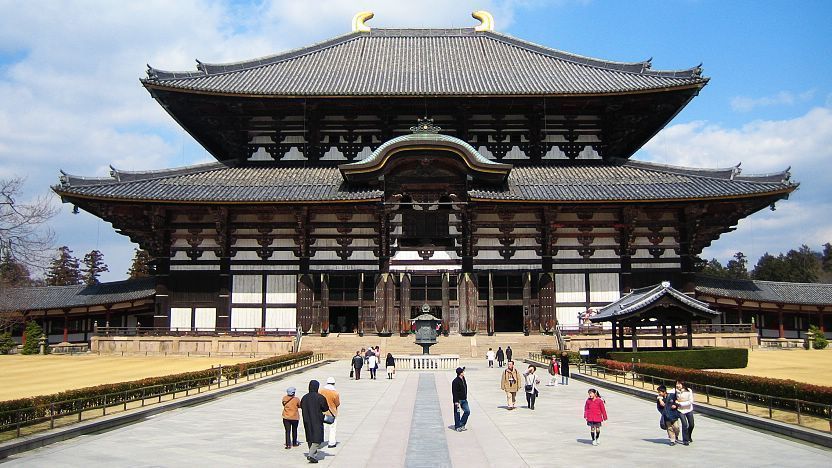
The Kegon school of Buddhism is located here, surrounded by lovely gardens and fauna, and the grounds contain numerous treasures of Japanese and Buddhist history. As messengers of the Shinto gods, deer are free to explore the grounds.
Todaiji is the headquarters of the Kegon sect of Japanese Buddhism, and Vairocana Buddha is regarded as the spiritual body of the historical Buddha – Gautama Buddha, or Sakyamuni in the Japanese language – by members of the religion.
5. Historic Kyoto
Kyoto, one of Japan’s most popular tourist destinations, gets more than 10 million people each year. It is one of the few towns in the country that was spared the ravages of WWII.

The majority of them have come to see Kyoto’s beautiful old streets and buildings, most of which has remained unaltered since the Imperial family first settled here over 1,000 years ago.
The city was already Japan’s most important cultural hub at the time. This history lives on today with the city’s several museums and art galleries, each brimming with important sculptures, paintings, and other works of art.
6. Hiroshima Peace Memorial
The Hiroshima Peace Memorial is a sombre memorial to those who died as a result of Hiroshima’s atomic bombing.
The memorial is set in a park and incorporates Genbaku Dome, the only building left standing in the area following the bombing.

This harrowing reminder of a world at war serves to remind visitors of the value of human life while also honouring the victims so that they are never forgotten.
Hiroshima Peace Memorial Park, which attracts over a million visitors each year, many of them from outside Japan, is located at the epicentre of the atomic blast in what was once a lively area of the city.
7. The Island Shrine of Itsukushima
The island of Itsukushima, in the Seto inland sea, has been a holy place of Shintoism since the earliest times. The first shrine buildings here were probably erected in the 6th century.
The present shrine dates from the 12th century and the harmoniously arranged buildings reveal great artistic and technical skill.

The shrine plays on the contrasts in colour and form between mountains and sea and illustrates the Japanese concept of scenic beauty, which combines nature and human creativity.
Also Read: 5 Most Underrated Places To Visit In India







